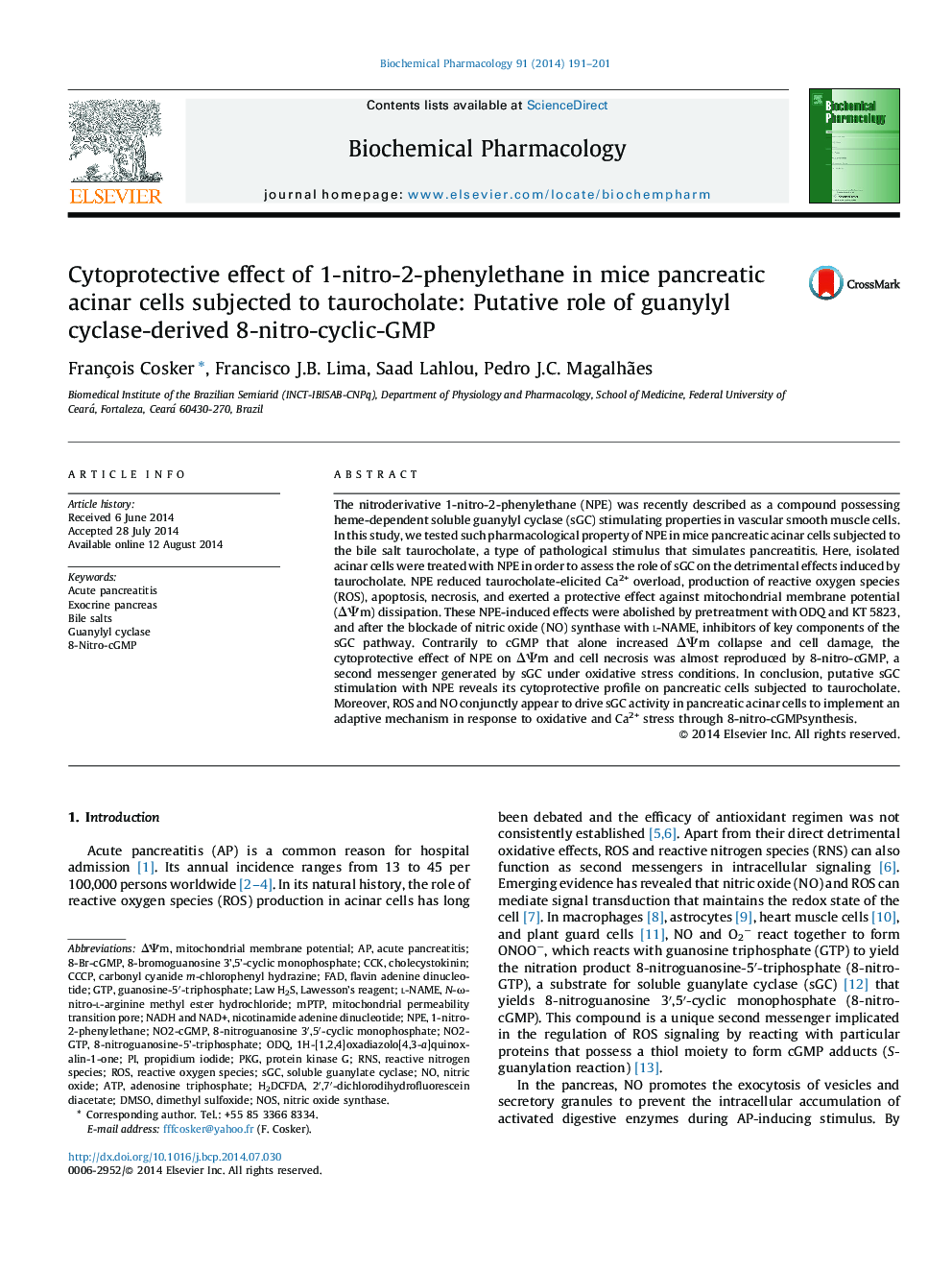| Article ID | Journal | Published Year | Pages | File Type |
|---|---|---|---|---|
| 5823345 | Biochemical Pharmacology | 2014 | 11 Pages |
The nitroderivative 1-nitro-2-phenylethane (NPE) was recently described as a compound possessing heme-dependent soluble guanylyl cyclase (sGC) stimulating properties in vascular smooth muscle cells. In this study, we tested such pharmacological property of NPE in mice pancreatic acinar cells subjected to the bile salt taurocholate, a type of pathological stimulus that simulates pancreatitis. Here, isolated acinar cells were treated with NPE in order to assess the role of sGC on the detrimental effects induced by taurocholate. NPE reduced taurocholate-elicited Ca2+ overload, production of reactive oxygen species (ROS), apoptosis, necrosis, and exerted a protective effect against mitochondrial membrane potential (ÎΨm) dissipation. These NPE-induced effects were abolished by pretreatment with ODQ and KT 5823, and after the blockade of nitric oxide (NO) synthase with l-NAME, inhibitors of key components of the sGC pathway. Contrarily to cGMP that alone increased ÎΨm collapse and cell damage, the cytoprotective effect of NPE on ÎΨm and cell necrosis was almost reproduced by 8-nitro-cGMP, a second messenger generated by sGC under oxidative stress conditions. In conclusion, putative sGC stimulation with NPE reveals its cytoprotective profile on pancreatic cells subjected to taurocholate. Moreover, ROS and NO conjunctly appear to drive sGC activity in pancreatic acinar cells to implement an adaptive mechanism in response to oxidative and Ca2+ stress through 8-nitro-cGMPsynthesis.
Graphical abstractDownload full-size image
